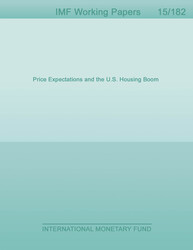
Price Expectations and the U.S. Housing Boom
Between 1996 and 2006 the U.S. has experienced an unprecedented boom in house prices. As it has proven to be difficult to explain the large price increase by observable fundamentals, many observers have emphasized the role of speculation, i.e. expectations about future price developments. The argument is, however, often indirect: speculation is treated as a deviation from a benchmark. The present paper aims to identify house price expectation shocks directly. To that purpose, we estimate a VAR model for the U.S. and use sign restrictions to identify house price expectation, housing supply, housing demand, and mortgage rate shocks. House price expectation shocks are the most important driver of the boom and account for about 30 percent of the real house price increase. We also construct a model-based measure of exogenous changes in price expectations and show that this measure leads a survey-based measure of changes in house price expectations. Our main identification scheme leaves open whether expectation shifts are realistic or unrealistic. In extensions, we provide evidence that price expectation shifts during the boom were primarily unrealistic and were only marginally affected by realistic expectations about future fundamentals.
Publication date: July 2015
ISBN: 9781513596235
$18.00
Add to Cart by clicking price of the language and format you'd like to purchase
Available Languages and Formats
| English |
Prices in red indicate formats that are not yet available but are forthcoming.
Topics covered in this book
This title contains information about the following subjects.
Click on a subject if you would like to see other titles with the same subjects.
Economics- Macroeconomics , Economics / General , International - Economics , Housing Market , House Price Expectations , Speculation , Housing Boom , VAR
Summary
Copyright © 2010 - 2024
Powered by:
AIDC



